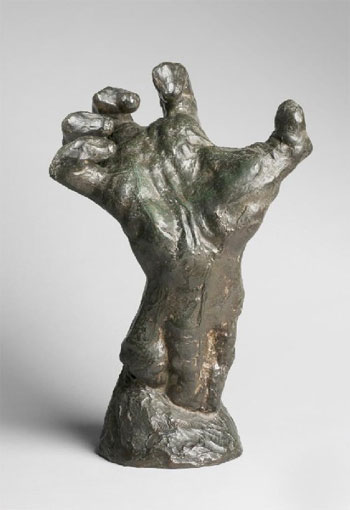 |
|||||||||||||||
|
|
|||||||||||
|
|||||||||||
 |
|
||||||||||
|
 |
||||||||||
 |
|
||||||||||
|
 |
||||||||||
|
|||||||||||
|
Rodin Museum
2151 Benjamin Franklin Parkway administered by The Philadelphia Museum of Art Philadelphia, PA 19130 (215) 763-8100 Map www.rodinmuseum.org Planning Your Visit As one of the most revered destinations on the Benjamin Franklin Parkway, the Rodin Museum offers a verdant, intimate setting in which to enjoy some of the world's most renowned masterpieces of sculpture. For the tens of thousands who visit each year, the Museum provides a momentary retreat from urban life in the heart of the city. About Auguste Rodin About the Rodin Museum Since 1929, the Philadelphia Museum of Art has administered the Rodin Museum and its collection. Over the years, several large sculptures originally installed outdoors were taken inside to protect them from the elements, and the original plantings became overgrown. The building, its galleries, and its grounds have been renovated to restore the Museum to its original vision, and new conservation treatments have made it possible to return sculptures to their intended places in the garden. The Museum has reopened with an inaugural installation dedicated to The Gates of Hell, the defining project of Rodin's career and one that consumed him for almost four decades. An important part of visiting the Rodin Museum is experiencing the garden, which recently underwent a three-year rejuvenation effort supported by the Philadelphia Museum of Art, the Pennsylvania Horticultural Society, the City of Philadelphia Department of Parks and Recreation, and generous public and private funders. The project was conceived and overseen by the landscape architecture firm OLIN and follows the spirit of the original plans by Cret and Gréber. With over 140 bronzes, marbles, and plasters, the distinguished collection housed in the Rodin Museum represents every phase of Auguste Rodin's career. Located on Philadelphia's Benjamin Franklin Parkway—which was intended to evoke the Avenue des Champs-Élysées in Paris—the elegant Beaux-Arts–style building and garden offer an absorbing indoor and outdoor experience. On View in the Garden On View in the Galleries Rodin’s portraits were prized in his lifetime for their vitality and honesty, and they continue to offer fascinating insights into his working practice. The works on view include such renowned subjects as Honoré de Balzac and Victor Hugo, the women in Rodin’s life including Rose Beuret and Camille Claudel, and several works that haven’t been exhibited for many years. This reinstallation presents the opportunity to appreciate Rodin’s prolific and complicated artistic process from a fresh perspective. The Maneely Family Gallery focuses on a series of works honoring writer Honoré de Balzac (French, 1799–1850). The sculptor spent most of the 1890s working on more than fifty different studies for the statue. His initial interest in a realistic portrayal of Balzac soon evolved into a broader concern with capturing the essence of the author's creative genius. When a model for the final sculpture was presented in 1898 it immediately drew criticism as being undignified and incomplete, but the artist refused to make changes to the portrait, which he regarded as one of his finest works. In 1939, twenty-two years after Rodin’s death, the monument was finally erected in Paris at the corner of boulevards Raspail and Montparnasse. The Zoë and Dean Pappas Gallery houses several of Rodin’s studies for major public monuments. In the late nineteenth century the French Third Republic sought to bolster its legitimacy by commissioning large-scale public art projects to commemorate individuals vital to the nation’s political and cultural life. Like many sculptors Rodin eagerly entered these competitions, recognizing them as a critical means of establishing his reputation and advancing his artistic ideas. His proposals were often bold and unconventional since he preferred to emphasize the humanity of his subjects rather than their heroic qualities or achievements. While many of the sculptor’s submissions were rejected or realized only with significant changes, the works found in the northeast gallery represent a powerful component of Rodin’s oeuvre and had a profound effect on public sculpture for decades to come. The Rodin Museum also includes works focusing on the towering bronze doors inspired by Dante’s Divine Comedy that have occupied the building’s portico since 1929. In 1880 Rodin received a commission to create The Gates of Hell for a new decorative arts museum that was going to be built in Paris. Though the museum was never realized, The Gates became the seminal work of Rodin’s career and a key to understanding his artistic aims. Left in plaster at Rodin’s death in 1917, the first bronze casts of The Gates of Hell were made for Jules Mastbaum, the founder of the Rodin Museum; one appears here and the second was given to the Musée Rodin in Paris. Some of Rodin’s most famous works were originally conceived as part of The Gates and were only later removed, enlarged, and cast as independent works. The Thinker evolved from the focal point atop The Gates into a freestanding sculpture. Though the monumental-sized Thinker maintains its prominent place in the garden, a smaller version can be seen in this gallery. Also on view is Copy of Rodin’s “The Kiss,” a marble depicting doomed lovers Paolo and Francesca, who reside in the second circle of hell in The Divine Comedy. Created especially for the Museum by sculptor Henri Gréber (French, 1855–1941), Copy of Rodin’s “The Kiss” suits the main gallery of the Rodin Museum exceptionally well, and demonstrates Jules Mastbaum’s vision for the Museum as a place where the breadth of Rodin’s work could become more widely known and appreciated.
Rodin's Hands |
|||||||||||
|
|||||||||||
| Support Your Local Galleries and Museums! They Are Economic Engines for Your Community.
Subscribe to Our Free Weekly Email Newsletter! |
|||||||||||
| ADVERTISE ON THIS SITE | HOME | EXHIBITIONS | INDEX | ABOUT US | LINKS | CONTACT US | DONATE | SUBSCRIBE |
| Copyright 2023 Art Museum Touring.com |